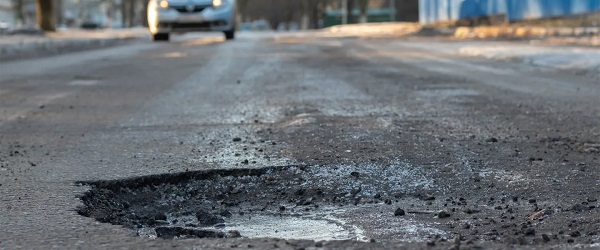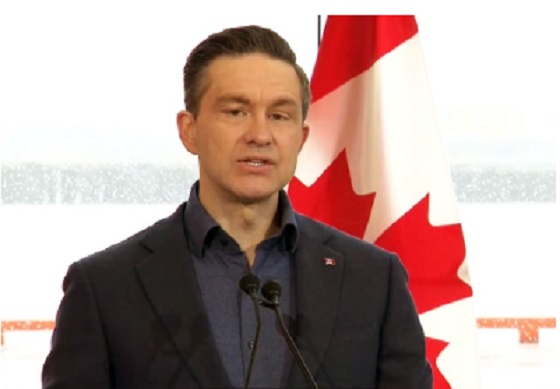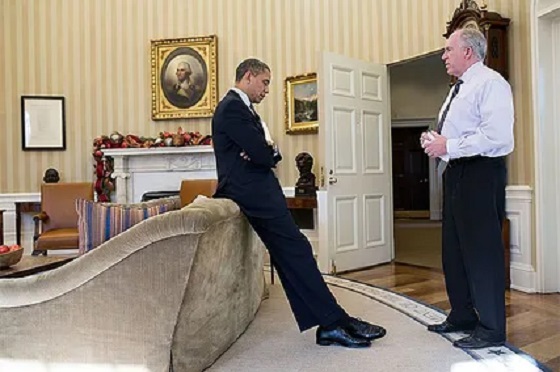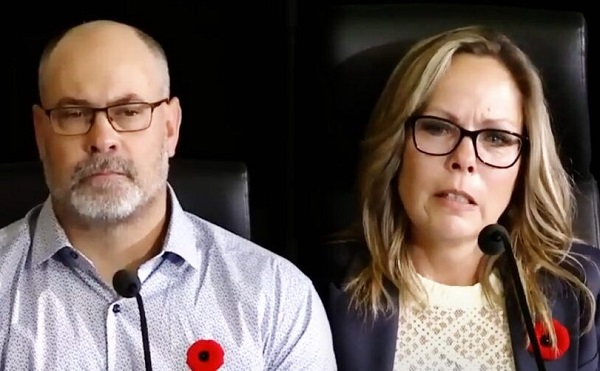Alberta
Leading Alberta Separatist Says A Free and Independent Alberta is a Wealthy Alberta

 News release from Jeffrey Rath
News release from Jeffrey Rath
Trevor Tombe, one of Premier Smith’s chosen “economists” on her “What’s Next Panel” published a weak critique of the “VALUE OF FREEDOM, The Draft Fiscal Plan For an Independent Alberta” in The Hub, a left-wing, low circulation online publication.
Mr. Tombe did not read the VALUE OF FREEDOM very carefully. His critique of the document where he refers to both the authors and the document as engaging in “fantasy” is exactly what one would expect from someone with major conflicts of interest.
He lists in his conflicts of interest disclosure as at November 25, 2024 his ongoing “Government of Canada (2022-2024) advisory and consulting services” along with numerous other Government of Canada and Alberta and other provincial paychecks. He is clearly a man with a vested interest in keeping his paymasters happy.
A perusal of his self-identified conflicts of interest begs the serious question as to how a FEDERAL GOVERNMENT “economist” was selected by Premier Smith to take part in her “What’s Next Panel”. What kind of interpretive filter does someone of Trevor Tombe’s obvious ilk serve between the people of Alberta and Premier Smith.
Tombe’s critique of THE VALUE OF FREEDOM referred to two examples of immediate tax reduction – either removing Provincial Personal Income and Corporate Income taxes and GST using the most pessimistic case ** OR** removing Federal Personal and Corporate income Taxes if we take the higher scenario.
THE VALUE OF FREEDOM intentionally used conservative Figures not wanting to overstate the already compelling case.
If he were to actually read the VALUE OF FREEDOM, as opposed to only cursorily read over only the summary, in Table 3 he would see the two separate cases outlined and understand that our base case was one **or** the other. Not both.
Both are plausible and immediate. We’d likely choose the lower one to start with.
This is without even using the updated provincial numbers which are about $15B extra provincial resource revenue compared to the sources used in the VALUE OF FREEDOM.
…and no, we do not include CPP revenue or expenses in that. StatsCan keeps them separate and so do we.
It’s not until we unleash the economic might of an independent Alberta as postulated in the last section where we clearly state that we, just for fun, examined an aggressive case, beyond the much more conservative cases considered in the rest of the document and imagined if Alberta exploited its natural resources in much the same way that other nations possessing significant oil and gas deposits have exploited theirs and garnered enormous economic gain for themselves.
Danielle Smith herself has suggested additional pipelines represent $20B added government revenue per pipeline, we postulate two more, allowing a tripling of volumes to be exported to an oil hungry world.
Then, we had a bit of fun….what could we do with that money?
Personal income taxes? Gone
Property Taxes? Replaced with a user fee.
Corporate taxes? Slashed to 10%
Other benefits? Many and good.
But feel free to speculate what you’d do if your country had that amount of extra revenue….keeping in mind that governments are a parasite on those who actually create the wealth and earn the money and letting the wealth creators keep more of it is a virtuous cycle, very different than the one exercised by the “tax and spend” approach used throughout Canada today.
As for the concern about tariffs and business with the rest of Canada, the flawed assumption is that we’d actually want to keep buying expensive Canadian goods.
Isn’t Trump pushing for no tariff zones with countries?
Why would an independent Alberta not welcome a tariff free zone with the USA and increase our share of north south business from its current 70% to 90% or more? The USA makes pretty well everything we need and certainly we can import through the USA rather than facing punitive tariffs from a petulant rump of Canada.
You really think that the pipelines through Saskatchewan would be tariffed? Seems to me that would pretty well be enough incentive for Saskatchewan to leave the sinking ship Canada and join with the rising star of Alberta, and together we make an even more powerful nation.
…and perhaps we ought to tariff rail and road traffic crossing Alberta land. Not much, just enough to offset any deviltry done by a grumpy Canada.
As for people fleeing Alberta, seems like more people are coming here from the rest of Canada already – surely a much lower taxed country would only attract still MORE talent, and we’d need every one of them to build the economy and diversify it. Remember, Alberta is roughly the size of the Ukraine and they were home to 44 million pre-war – so we have the space certainly.
Large scale data centres for AI – it’s wonderful in Alberta with low taxes, low energy costs and natural cooling courtesy of a cool climate
Specialized manufacturing? Nice thing to do here with a tariff free zone to the world’s largest market.
We never really got into all the things we could do as an independent country – the case was plenty compelling as it stands.
Simplify our tax code – go to consumption-based taxes, eliminating most of the tax collection department and legions of accountants who pore through income tax statements now that we collect tax surely and easily at point of sale.
Clear out the bureaucrats who chase down obscure government of Canada regulations, now replaced with “Made in Alberta” regulations which are simpler, easier to live with and less onerous.
Mr. Tombe needs to internalize that the case for a FREE AND INDEPENDENT ALBERTA is compelling.
Are there numbers which we need to tune? Yes, we are hard at it….we’ll get the Defense up to NATO standards, we will bake in OAS, GIS and other supports for seniors, CCB is already in there. But have no doubt, a country with the aggressiveness of Alberta will grow, thrive and have plenty of economic capacity to do all those things with ease.
A free Alberta is a wealthy Alberta.
Come join us.
Jeffrey R. W. Rath B. A. (Hons), LL.B. (hons)
Dennis P. Kalma B.SC. Physics (Distinction)
Alberta
Alberta court’s ‘gender’ ruling ignores evidence and common sense.

Justice or ideology?
Justice Kuntz’ judgment makes for astonishing reading. For instance, stating “there is nothing speculative about this evidence” blithely ignores the alarm bells set off by medical authorities in the United Kingdom, Finland, Sweden and elsewhere who went in search of such evidence and found it to be grossly lacking. Those countries subsequently enacted severe restrictions on the provision of puberty blockers and cross-gender hormones to youth.
Last November, the Alberta Medical Association (AMA) released a statement taking aim at the Smith government for its new legislation banning puberty blockers and hormone therapy for trans-identifying youth. The AMA stated, among other things: “There is no place for the government in the medical decisions being made by parents and their children in conjunction with physicians.”
In an ideal world, the AMA would be absolutely correct—just as in an ideal world there would be no hunger, poverty, discrimination and violence.
But we don’t live in that ideal world. We live in an imperfect world where even the most well-intentioned physicians (and physician groups) get things wrong. Consider only the sad histories of frontal lobotomies, the Tuskegee syphilis experiments, the thalidomide disaster, the origins of the opioid crisis, and so on.
Opponents of the Alberta government’s gender legislation (a cohort which includes the Canadian Medical Association and the Canadian Pediatric Society) surely felt vindicated the other week when Justice Allison Kuntz issued an injunction suspending Alberta’s new law. (Full disclosure: I and four other pediatric specialists provided affidavits in support of the government’s position.) In her ruling favouring the several parties that jointly sued the government, Justice Kuntz wrote:
I find that there will be irreparable harm to gender diverse youth if an injunction is not granted. The evidence shows that the Ban will cause irreparable harm by causing gender diverse youth to experience permanent changes to their body that do not align with their gender identity. There is nothing speculative about this evidence.
Justice Kuntz’ judgment makes for astonishing reading. For instance, stating “there is nothing speculative about this evidence” blithely ignores the alarm bells set off by medical authorities in the United Kingdom, Finland, Sweden and elsewhere who went in search of such evidence and found it to be grossly lacking. Those countries subsequently enacted severe restrictions on the provision of puberty blockers and cross-gender hormones to youth.
Astonishing, too, is Justice Kuntz’ favourable emphasis of the World Professional Association for Transgender Health (WPATH) guidelines, while ignoring the grave concerns that exist regarding evidence-free “gender affirmation” practices.
Justice Kuntz does devote space to summarizing the Cass Review—an exhaustive four-year investigation by esteemed pediatrician Dr. Hilary Cass into gender medicine practices in the U.K., which led to the shuttering of that country’s Tavistock gender clinic and a ban on the provision of puberty blockers to youth. She concedes that the Alberta government’s expert evidence is “consistent with the Cass Review”, yet in the end, inexplicably, sets this aside in favour of the complainants’ view that the legislation may “irreparably” harm children, rather than the “gender-affirming” model of care.
And Justice Kuntz omits entirely any mention of the twin Canadian systematic reviews authored this year by Dr. Gordon Guyatt’s group at McMaster University, which also exposed the lack of evidence for “gender-affirming” care. Nor does she mention the U-turn on gender practices initiated by Dr. Riittakerttu Kaltiala of Finland, the very founder of Finland’s gender medicine service.
On her weekend radio show, Alberta Premier Danielle Smith reacted to Justice Kuntz’ ruling: “The court… said that they think that there will be irreparable harm if the law goes ahead. I feel the reverse.”
I and many other medical professionals (many of whom dare not speak openly) agree with the premier. Initiating puberty blockers in gender-confused children sets them on a pathway, which in most cases leads on to cross-gender hormones and in some instances to body-revising surgery. This is a pathway of no return, paved with lifelong medicalization and infertility— implications that adolescents are grossly ill-equipped to comprehend.
Those of us harbouring grave concerns will not use the hyperbolic language of trans activists, such as “denying the right of trans-identified youth to exist.” On the contrary; we want only for them to exist in the most healthy way possible, based on the best available evidence. We want them to become comfortable, if possible, in the body in which they were born—an outcome evidence has shown to be eminently achievable with appropriate counselling and “watchful waiting.”
On the other hand, the best available evidence for the “gender-affirming” approach is scant, notwithstanding Justice Kuntz’ capitulation to the unsupported conclusions of the complainants. And as Dr. Cass and others have discovered, the evidence suggests that the gender-affirming drug-administering model of care does more harm than good.
Justice Kuntz ruling is an injunction, to be clear. It isn’t a final ruling—full adjudication will play out in court in the coming months. One can only hope that, after a complete and proper airing of the issue, sanity and level-headedness will prevail despite the toxic politicization that has poisoned the debate.
That would be, well, ideal.
Dr. J. Edward Les is a Calgary pediatrician and senior fellow with the Aristotle Foundation for Public Policy. His new book is “Cloudy with a Risk of Children: Straight Talk from the Pediatric ER.” Photo: iStock.
Alberta
Albertans should question any calls for more money from municipal governments

From the Fraser Institute
By Ben Eisen and Austin Thompson
In Cochrane, an ordinary park bench costs between $5,000 and $7,000. The City of Calgary will spend $515 million of taxpayer money to build a new arena for the Flames. Edmonton fire stations cost 63 per cent more than comparable facilities elsewhere—an independent report suggests “the largest portion of the cost premium… is attributed to the City of Edmonton’s Climate Resilience policy.”
According to our recent study, from 2008 (the earliest year of available data) to 2023 (the latest year of data), total spending by municipal governments around the province increased from $3,187 per person to $3,750. That’s an increase of 18 per cent (inflation-adjusted). During the same period, total municipal property tax revenue increased by 13 per cent (inflation-adjusted).
In light of these spending and tax increases, it’s fair to ask—have your local municipal services improved in recent years?
Well, it depends on who you ask. But a 2025 survey conducted by the City of Calgary found that only 46 per cent of residents said they receive “good” value for their property tax dollars (rather than “neutral” or “poor”). Satisfaction with the overall level and quality of municipal services declined from 76 per cent in 2017 to 61 per cent in 2025. And only about 9 per cent of Calgarians want the city to increase taxes beyond the current inflation rate to expand services, with the rest preferring to maintain or reduce taxes.
Albertans in other municipalities share similar concerns. According to a 2024 city survey, the vast majority of Edmontonians said winter road maintenance is “very important” but only 45 per cent report being satisfied with this municipal service. And according to a 2023 survey of citizen satisfaction, only 11 per cent of the residents of Grande Prairie County want to “increase taxes to expand services.”
Meanwhile, evidence of municipal waste is not hard to find.
In Cochrane, an ordinary park bench costs between $5,000 and $7,000. The City of Calgary will spend $515 million of taxpayer money to build a new arena for the Flames—this is splashy corporate welfare with dubious public benefits. Edmonton fire stations cost 63 per cent more than comparable facilities elsewhere—an independent report suggests that “the largest portion of the cost premium… is attributed to the City of Edmonton’s Climate Resilience policy.”
In short, municipal spending has increased significantly but many Albertans do not see how this increase translated into better services that have improved their lives. This should make taxpayers and senior levels of governments skeptical of claims from municipalities that they need even more money to help deliver core services. (For example, Alberta’s municipalities claim they need an additional $30 billion to maintain local infrastructure such as roads, wastewater systems and recreational facilities.)
Are you getting good value for your property tax dollars? For many Albertans, the answer appears to be “no.” Until municipalities can demonstrate that existing resources are being used effectively, calls for even more funding should be met with healthy skepticism.
-

 Addictions13 hours ago
Addictions13 hours agoGovernments ease alcohol access as evidence of its harms mount
-

 COVID-1912 hours ago
COVID-1912 hours agoCOVID shot mandates persist for Ontario health workers despite staffing crisis
-

 Daily Caller14 hours ago
Daily Caller14 hours agoTom Homan Details Search For 300,000 Kids Biden Admin Lost
-

 Business11 hours ago
Business11 hours agoLeft-wing mainstream media is crumbling right before our eyes
-

 Break The Needle1 day ago
Break The Needle1 day agoNew drug cartel terrorist designations raise legal risks for Canadian banks
-

 COVID-191 day ago
COVID-191 day agoTamara Lich thanks Poilievre for calling out ‘double standard’ justice system
-

 International2 days ago
International2 days agoGabbard declassifies report showing Obama officials “knowingly lied” on Russia
-

 COVID-191 day ago
COVID-191 day agoFreedom Convoy leaders seek ‘absolute discharge’ as sentencing announced October 7





